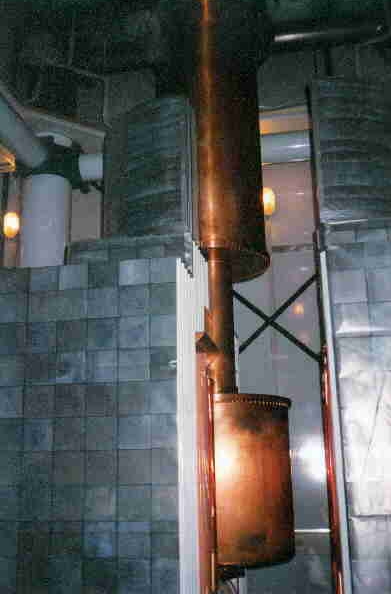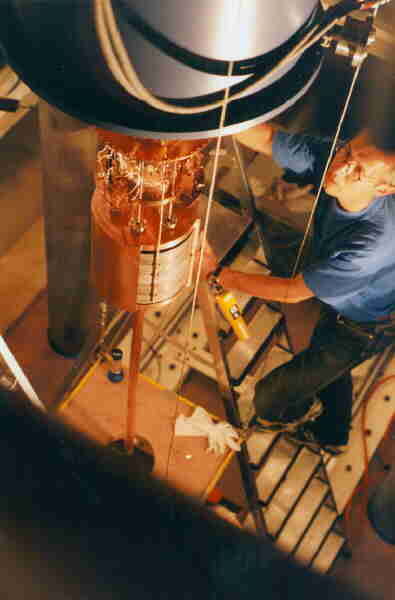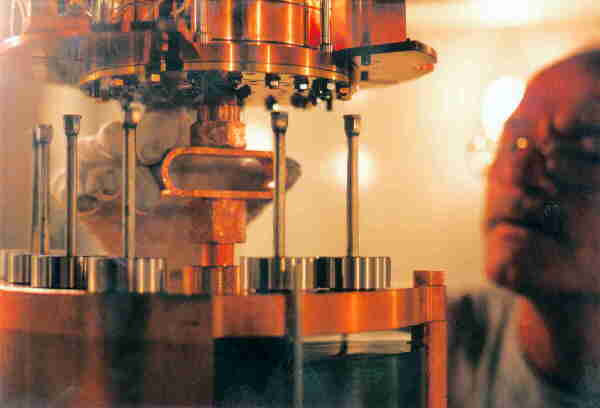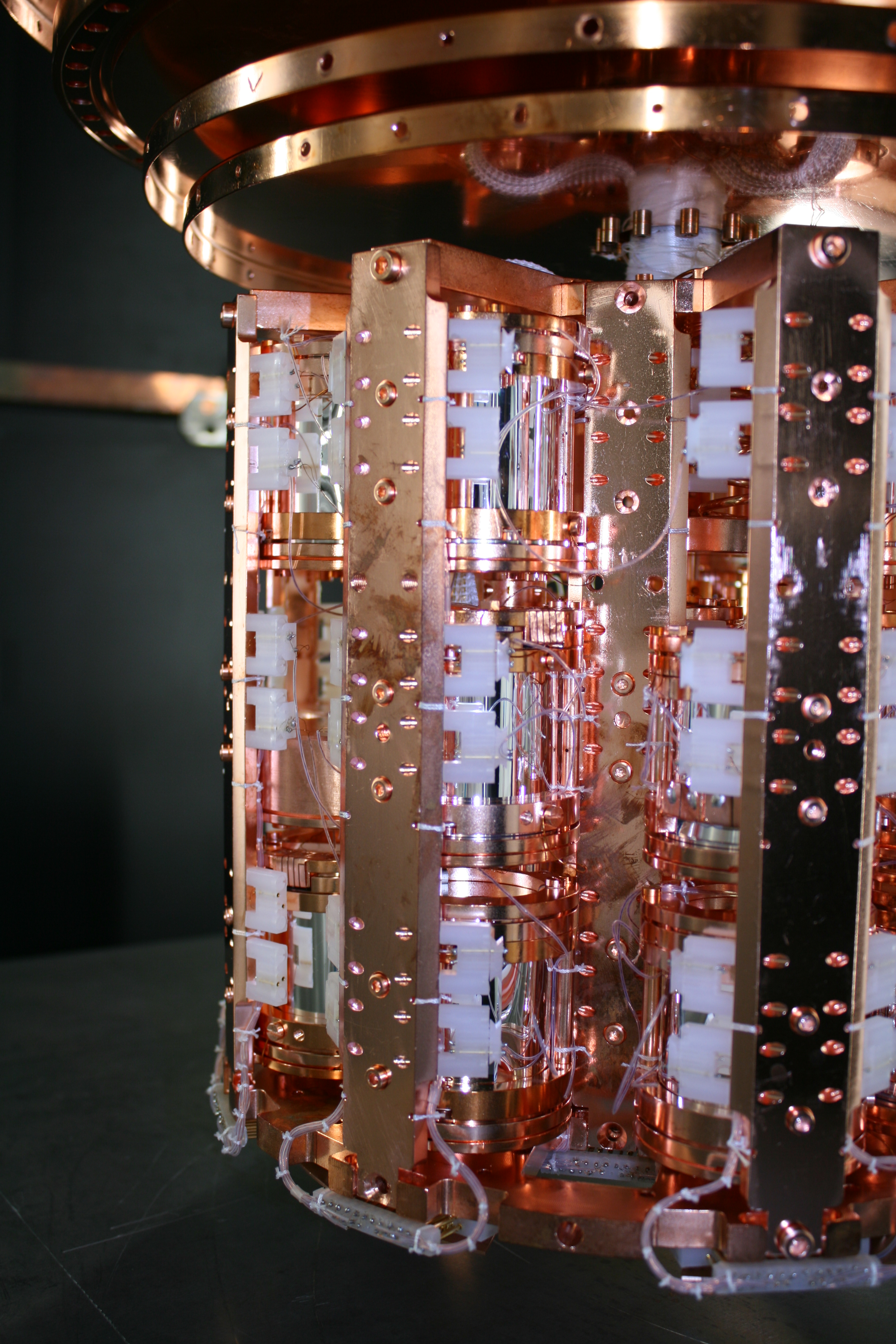CRESST-I
A very active group working on different cryogenic detector types formed at the TU Munich and the MPP. This collaboration led to the proposal of a dark matter search experiment using cryogenic calorimeters with transition edge sensors in the LNGS underground laboratory in 1993.
At first, the project had the working title "Munich Dark Matter Search", but as the collaboration expanded to include groups in Oxford and at LNGS, the experiment was called "CRESST" from 1996 on.
The experiment was constructed in hall B of the LNGS laboratory and after a series of prototype measurements, a first dark matter search with four detectors made from sapphire crystals with a mass of 262g each was performed in 2000.
The final result from this first phase of the project, later dubbed CRESST-I, was published in 2003 and provided for a long time the best limits for WIMPs with a mass of around 1 GeV/c2.

CRESST-I Detector.




From left to right: Lead Shield, Coldfinger, CRESST-I Detector, Mixing Chamber.
CRESST-II

Carousel with CRESST-II Detectors.
Despite all efforts to reduce radioactive backgrounds through shielding and careful material selection, the remaining background was still too high to make further progress. In addition, the preferred mass range for WIMPs at the time was around 100 GeV, where heavier target nuclei are favored. Both issues were adressed by switching the target material to CaWO4: this contains tungsten as a very heavy nucleus and it creates scintillation light as a secondary signal, which can be used to distinguish background signals (electron recoils) from potential dark matter signals (nuclear recoils). The switch to CaWO4 as detector material and the background suppression using the additional light signal marked the transition to CRESST-II.
Before first measurements at LNGS could be performed with the new detectors, the setup had to be moved from hall B to hall A. First results using two 300g CaWO4 detectors were published in 2004.
In the next years, the electronics system was upgraded to be able to operate 33 detectors at the same time. First results with the new setup were published in 2007 followed by a more extensive measurement campaign which ended in 2011. These measurements suffered from a nuclear recoil background caused by alpha decays on the surfaces of the detector modules.
A re-design of the detector holding structure eliminated this background source. First results from these detectors were published in 2015 and were referred to as CRESST-II Phase 2.
During this time, a series of potential signals in other experiments hinted toward lower WIMP masses. The low energy thresholds possible with the transition edge sensors used in CRESST allowed to set the leading limits at low WIMP masses and to push the accessible mass range to lower masses.
CRESST-III
The logical development was to play out this strength and optimize the detectors for low energy thresholds. This led to a novel design using smaller 24g CaWO4 detectors which became the main characteristic of the CRESST-III phase. A first result was published in 2019 and extended the reach to WIMP masses as low as 160MeV.
CRESST-III also employs other target materials like sapphire or LiAlO2 which include lighter target nuclei more favorable for low-mass WIMP search and nuclei sensitive to spin-dependent interactions.
Presently, the sensitivity is limited by background events at energies close to the detection threshold. Novel detector designs are being developed to identify the origin of these events and hopefully eliminate them in the future. This would not only help CRESST, but the entire community using cryogenic detectors as similar experiments are also suffering from these backgrounds.
In the coming years, a major upgrade of the CRESST facility at the LNGS is planned. The entire data acquisition system, electronics and wiring will be exchanged and the number of readout channels will be increased from 66 to 300. This large effort will make the setup ready for the next years of exciting measurements.

Closeup on a work-in-progress CRESST-III detector.
(Photo: T. Dettlaff/MPP)
CRESST Technology in other Experiments
In recent years, CRESST members have started new projects using the proven TES-based cryogenic detector design for other goals.
The COSINUS project took on the challenge to apply the CRESST technology to NaI target crystals to study the claim of the DAMA experiment of having detected dark matter through the annual modulation of the event rate.
The NUCLEUS project turns to the original idea of detecting neutrinos from a nuclear reactor via coherent elastic scattering on nuclei with an array of gram-scale cryogenic detectors.
